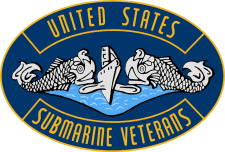"SEANETTLE VS U-BOAT"
In the Summer of 1944, the USS SEANETTLE (name changed) received an
unusual assignment from Comsubpac: Find and sink a German submarine
known to be traversing•the Pacific en route to Japan.
Comsubpac never said why the German U-boat was so important, but the captain
of the SEANETTLE took the message at face value and with only three torpedoes
left in his boat, began the search.
Anticipating the enemy skipper's movements, and aware that the U-Boat would be
low on fuel, the American commander plotted a course that he felt would intersect
the German sub's line of travel.
The Nazi vessel showed up but caught the sound of the SEANETTLE'S screws and slipped
off on another course. SEANETTLE planned anew, feeling the enemy would make for Hong
Kong to refuel. When the German tried to enter the harbor of the British' crown
colony, the Americans were waiting for him.
A deadly underwater duel took place before the American skipper finally maneuvered
the U-boat into surfacing. Then, the SEANETTLE fired her remaining torpedoes and
steered along their wake, planning to ram if the missiles went awry. An underwater
explosion rocked the U-boat and, tubes empty, the SEANETTLE set a course for home.



